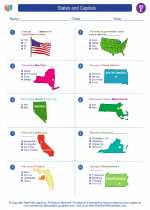Map Projections
A map projection is a method used to represent the three-dimensional surface of the earth or a celestial body on a two-dimensional surface, such as a map. Since it is impossible to accurately represent the curved surface of the earth on a flat map, cartographers use various map projections to minimize distortion in different aspects such as distance, direction, shape, or area.
Types of Map Projections
There are several types of map projections, each with its own strengths and weaknesses:
- Conic Projection: This projection is best suited for representing areas closer to the poles with minimal distortion. It is often used for mapping small areas, such as countries or regions.
- Cylindrical Projection: Cylindrical projections are created by wrapping a cylinder around the globe, resulting in less distortion of direction and shape along the equator. Examples of cylindrical projections include the Mercator projection.
- Planar Projection: Also known as azimuthal or polar projection, this type of projection portrays the earth as seen from a single point. It is often used for mapping the polar regions.
- Compromise Projection: These projections attempt to balance the distortion of various map properties, such as the Robinson and Winkel Tripel projections.
Study Guide
To better understand map projections, consider the following study guide questions:
- Explain the purpose of map projections and why they are necessary.
- Compare and contrast the characteristics of conic, cylindrical, and planar map projections.
- Discuss the advantages and disadvantages of using the Mercator projection for navigation and exploration.
- Examine how map projections can distort the representation of continents and countries.
- Research and analyze the impact of map projections on political and cultural perceptions, particularly in relation to the size and positioning of countries.
By exploring these questions and understanding the different types of map projections, you can gain a comprehensive knowledge of how maps are created and the potential distortions that may arise when representing the earth's surface on a two-dimensional map.
[Map Projections] Related Worksheets and Study Guides:
.◂Social Studies Worksheets and Study Guides Fifth Grade. States and Capitals

 Worksheet/Answer key
Worksheet/Answer key
 Worksheet/Answer key
Worksheet/Answer key
 Worksheet/Answer key
Worksheet/Answer key
